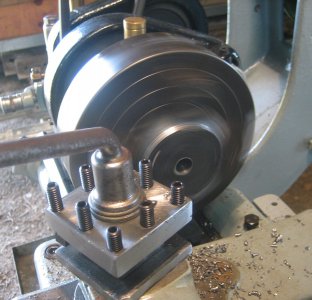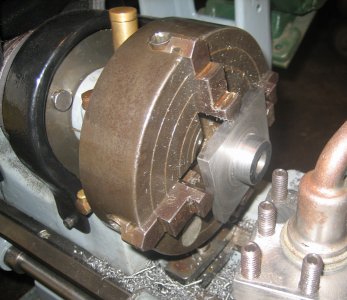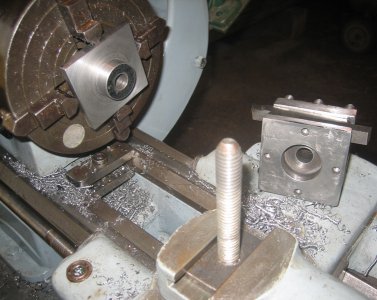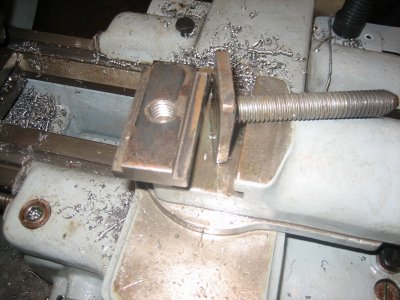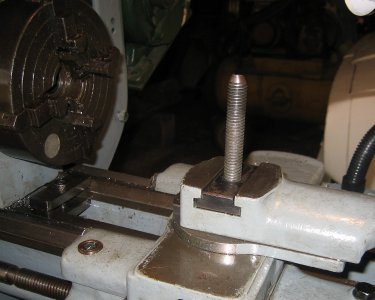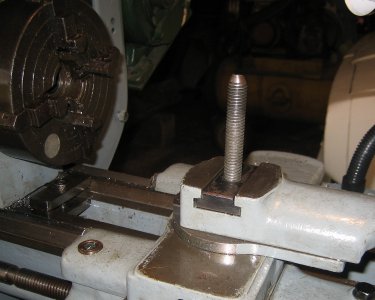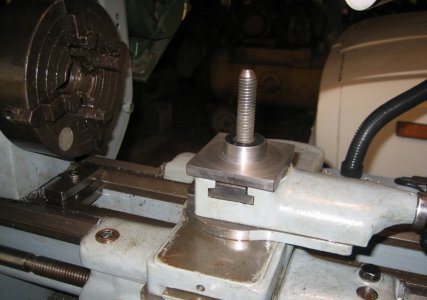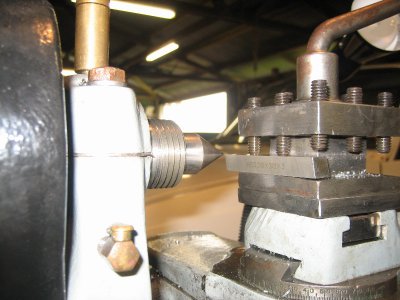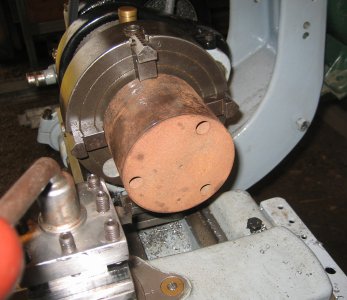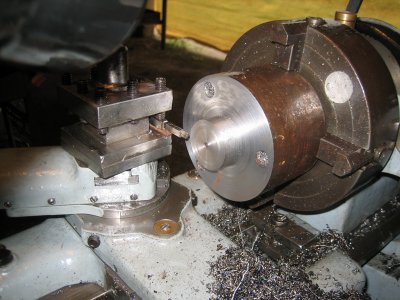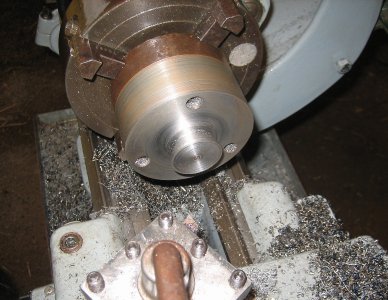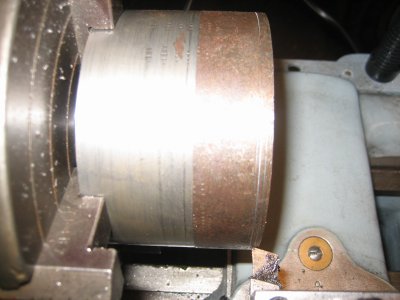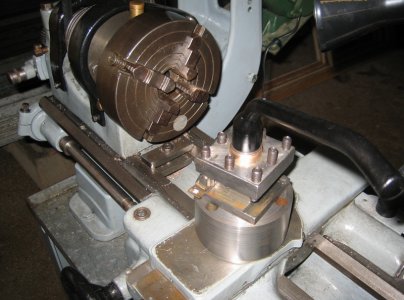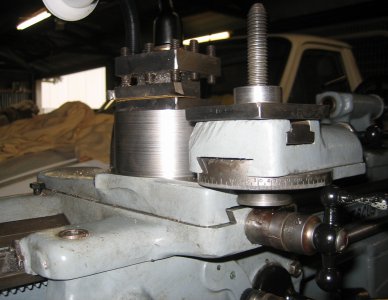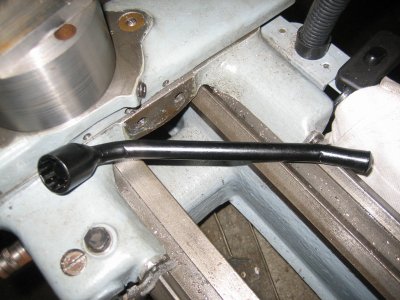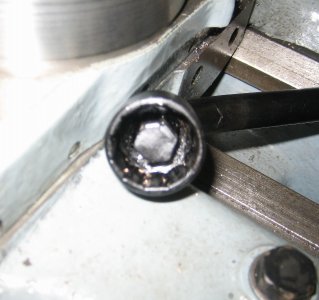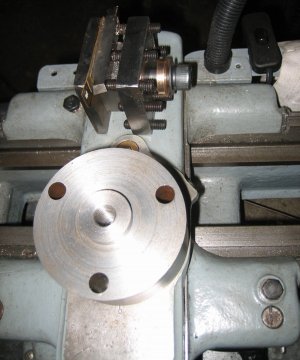Hi...
I have what must be a common machining question, but I can't seem to find an answer here by using "Search". (Although, there is so much information here that I just may have missed it...)
Let's assume that I have an appropriately-sized lathe for what I want to do. I have a piece of 3 inch diameter bar stock. I want to create a section three inches long. I cut the bar stock with, let's say, a bandsaw to a bit longer than the desired three inch length. My next step should be to face both ends.
And here is the issue. The stock is too large in diameter to fit through the chuck. Therefore, I imagine that one would reverse the chuck jaws and set the piece in fully, seating it on the step of all three jaws. BUT neither end of the piece is square; that's why I would want to face it. Therefore, doing what I describe would cause the part to not be aligned with the centerline of the chuck.
1. How do I hold the part to make a reliable, square facing cut on one end when neither end of the part is square? Once I have one square end, the other end should be easy to face with the process I describe above.
2. I have a bunch of other similar questions in my mind. There MUST be a book somewhere that describes possible solutions for such basic, beginner questions as these. Would someone be kind enough to recommend a particular book?
Many thanks!
Charlie
I have what must be a common machining question, but I can't seem to find an answer here by using "Search". (Although, there is so much information here that I just may have missed it...)
Let's assume that I have an appropriately-sized lathe for what I want to do. I have a piece of 3 inch diameter bar stock. I want to create a section three inches long. I cut the bar stock with, let's say, a bandsaw to a bit longer than the desired three inch length. My next step should be to face both ends.
And here is the issue. The stock is too large in diameter to fit through the chuck. Therefore, I imagine that one would reverse the chuck jaws and set the piece in fully, seating it on the step of all three jaws. BUT neither end of the piece is square; that's why I would want to face it. Therefore, doing what I describe would cause the part to not be aligned with the centerline of the chuck.
1. How do I hold the part to make a reliable, square facing cut on one end when neither end of the part is square? Once I have one square end, the other end should be easy to face with the process I describe above.
2. I have a bunch of other similar questions in my mind. There MUST be a book somewhere that describes possible solutions for such basic, beginner questions as these. Would someone be kind enough to recommend a particular book?
Many thanks!
Charlie


